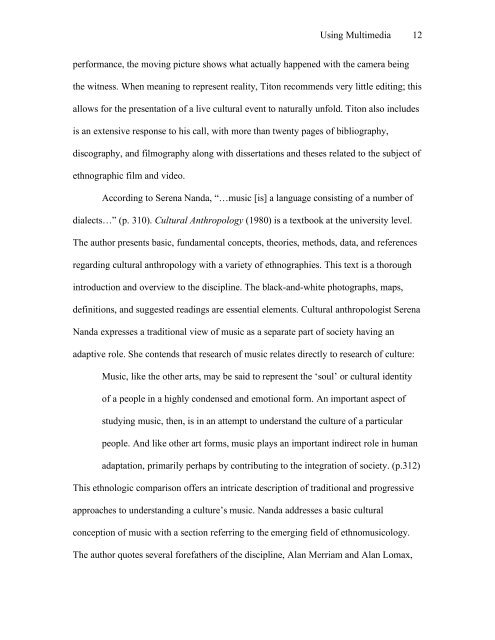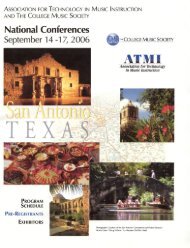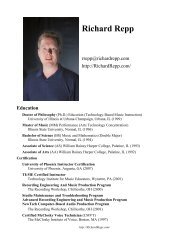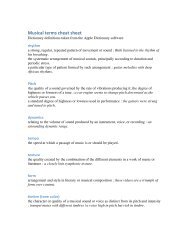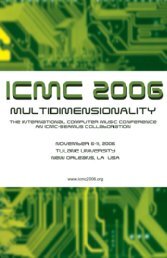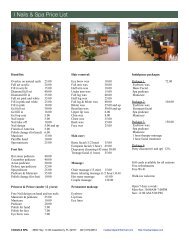Using Multimedia to Expand the Audience of ... - Richard Repp
Using Multimedia to Expand the Audience of ... - Richard Repp
Using Multimedia to Expand the Audience of ... - Richard Repp
Create successful ePaper yourself
Turn your PDF publications into a flip-book with our unique Google optimized e-Paper software.
<strong>Using</strong> <strong>Multimedia</strong> 12<br />
performance, <strong>the</strong> moving picture shows what actually happened with <strong>the</strong> camera being<br />
<strong>the</strong> witness. When meaning <strong>to</strong> represent reality, Ti<strong>to</strong>n recommends very little editing; this<br />
allows for <strong>the</strong> presentation <strong>of</strong> a live cultural event <strong>to</strong> naturally unfold. Ti<strong>to</strong>n also includes<br />
is an extensive response <strong>to</strong> his call, with more than twenty pages <strong>of</strong> bibliography,<br />
discography, and filmography along with dissertations and <strong>the</strong>ses related <strong>to</strong> <strong>the</strong> subject <strong>of</strong><br />
ethnographic film and video.<br />
According <strong>to</strong> Serena Nanda, “…music [is] a language consisting <strong>of</strong> a number <strong>of</strong><br />
dialects…” (p. 310). Cultural Anthropology (1980) is a textbook at <strong>the</strong> university level.<br />
The author presents basic, fundamental concepts, <strong>the</strong>ories, methods, data, and references<br />
regarding cultural anthropology with a variety <strong>of</strong> ethnographies. This text is a thorough<br />
introduction and overview <strong>to</strong> <strong>the</strong> discipline. The black-and-white pho<strong>to</strong>graphs, maps,<br />
definitions, and suggested readings are essential elements. Cultural anthropologist Serena<br />
Nanda expresses a traditional view <strong>of</strong> music as a separate part <strong>of</strong> society having an<br />
adaptive role. She contends that research <strong>of</strong> music relates directly <strong>to</strong> research <strong>of</strong> culture:<br />
Music, like <strong>the</strong> o<strong>the</strong>r arts, may be said <strong>to</strong> represent <strong>the</strong> ‘soul’ or cultural identity<br />
<strong>of</strong> a people in a highly condensed and emotional form. An important aspect <strong>of</strong><br />
studying music, <strong>the</strong>n, is in an attempt <strong>to</strong> understand <strong>the</strong> culture <strong>of</strong> a particular<br />
people. And like o<strong>the</strong>r art forms, music plays an important indirect role in human<br />
adaptation, primarily perhaps by contributing <strong>to</strong> <strong>the</strong> integration <strong>of</strong> society. (p.312)<br />
This ethnologic comparison <strong>of</strong>fers an intricate description <strong>of</strong> traditional and progressive<br />
approaches <strong>to</strong> understanding a culture’s music. Nanda addresses a basic cultural<br />
conception <strong>of</strong> music with a section referring <strong>to</strong> <strong>the</strong> emerging field <strong>of</strong> ethnomusicology.<br />
The author quotes several forefa<strong>the</strong>rs <strong>of</strong> <strong>the</strong> discipline, Alan Merriam and Alan Lomax,


